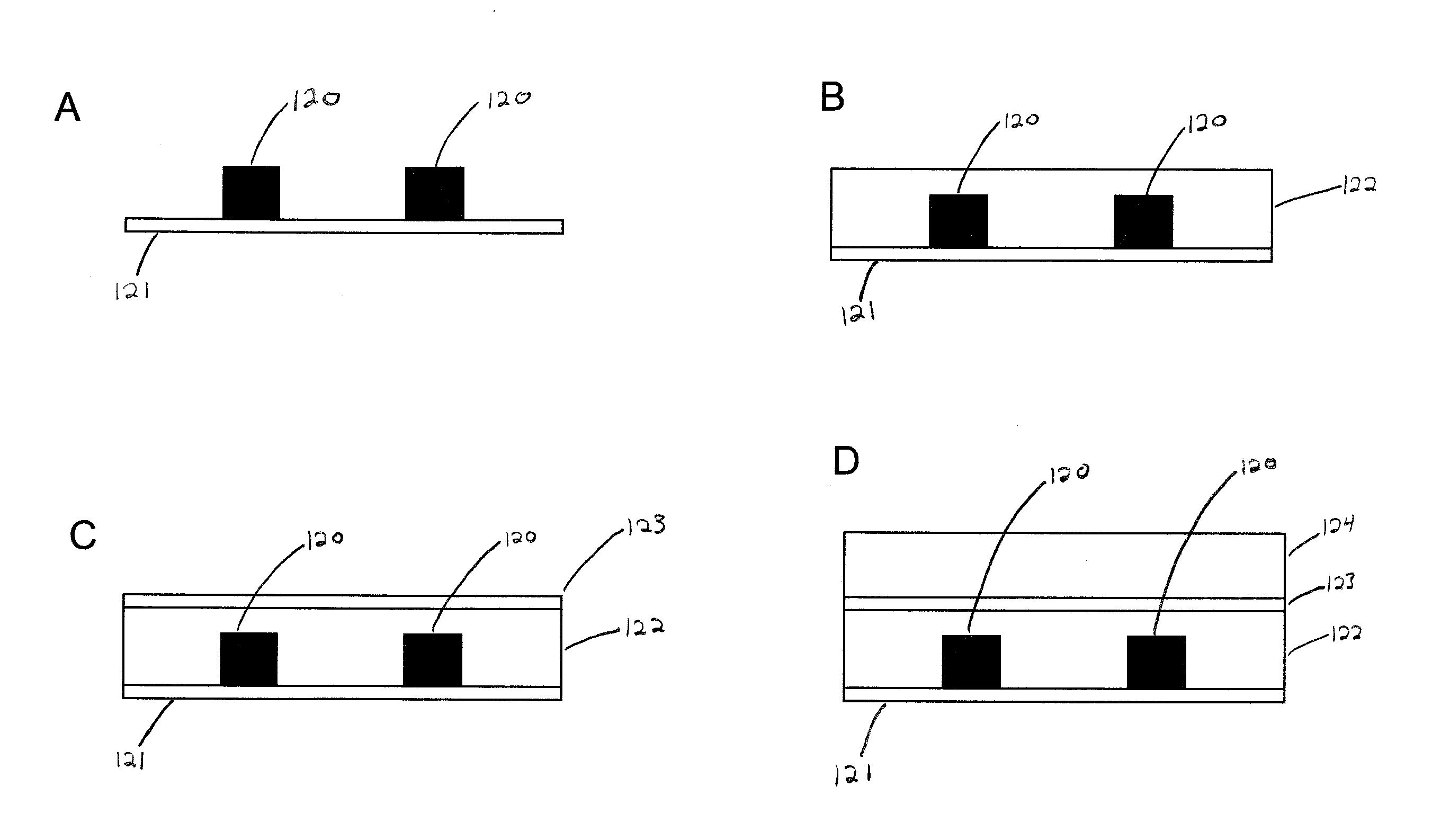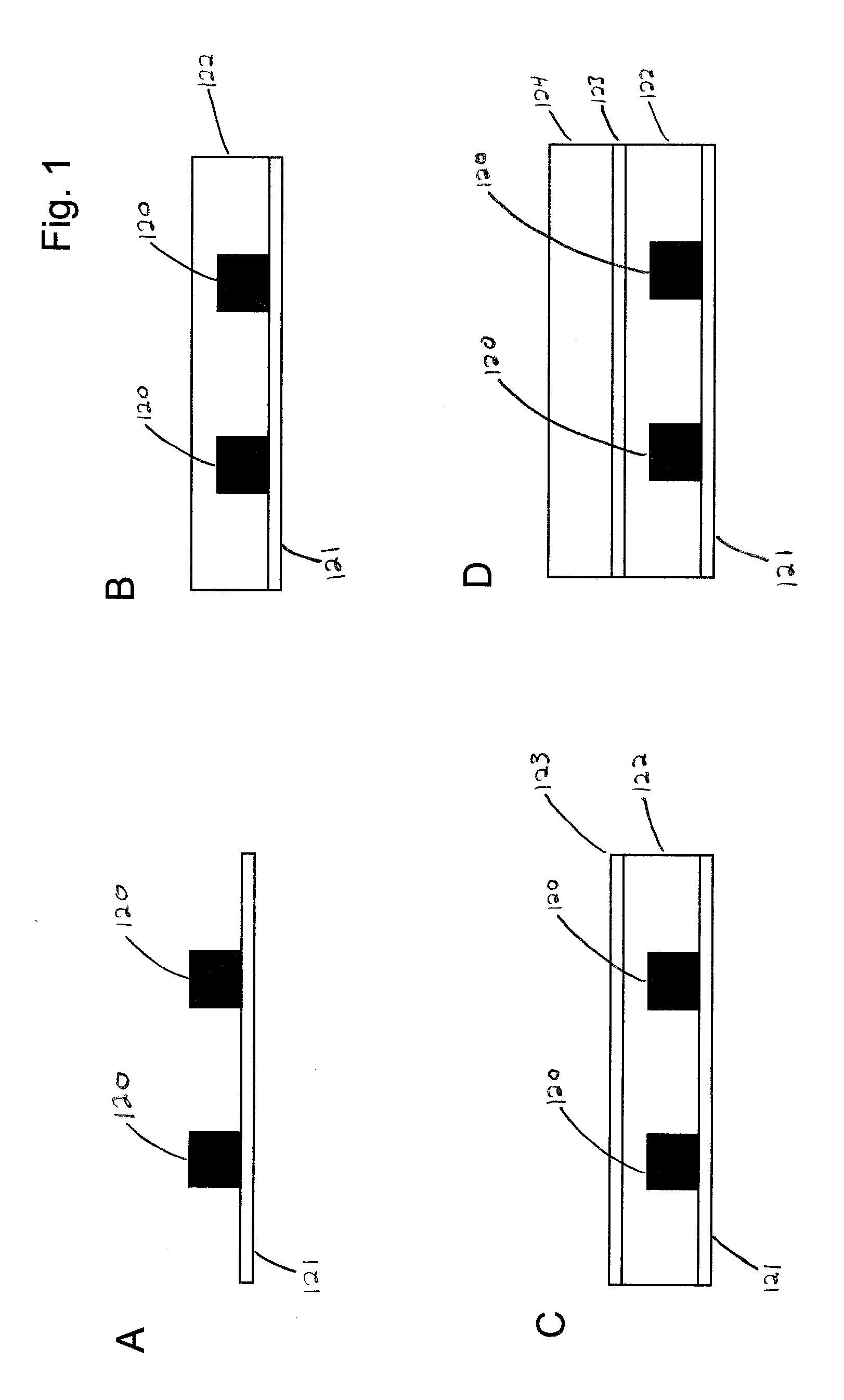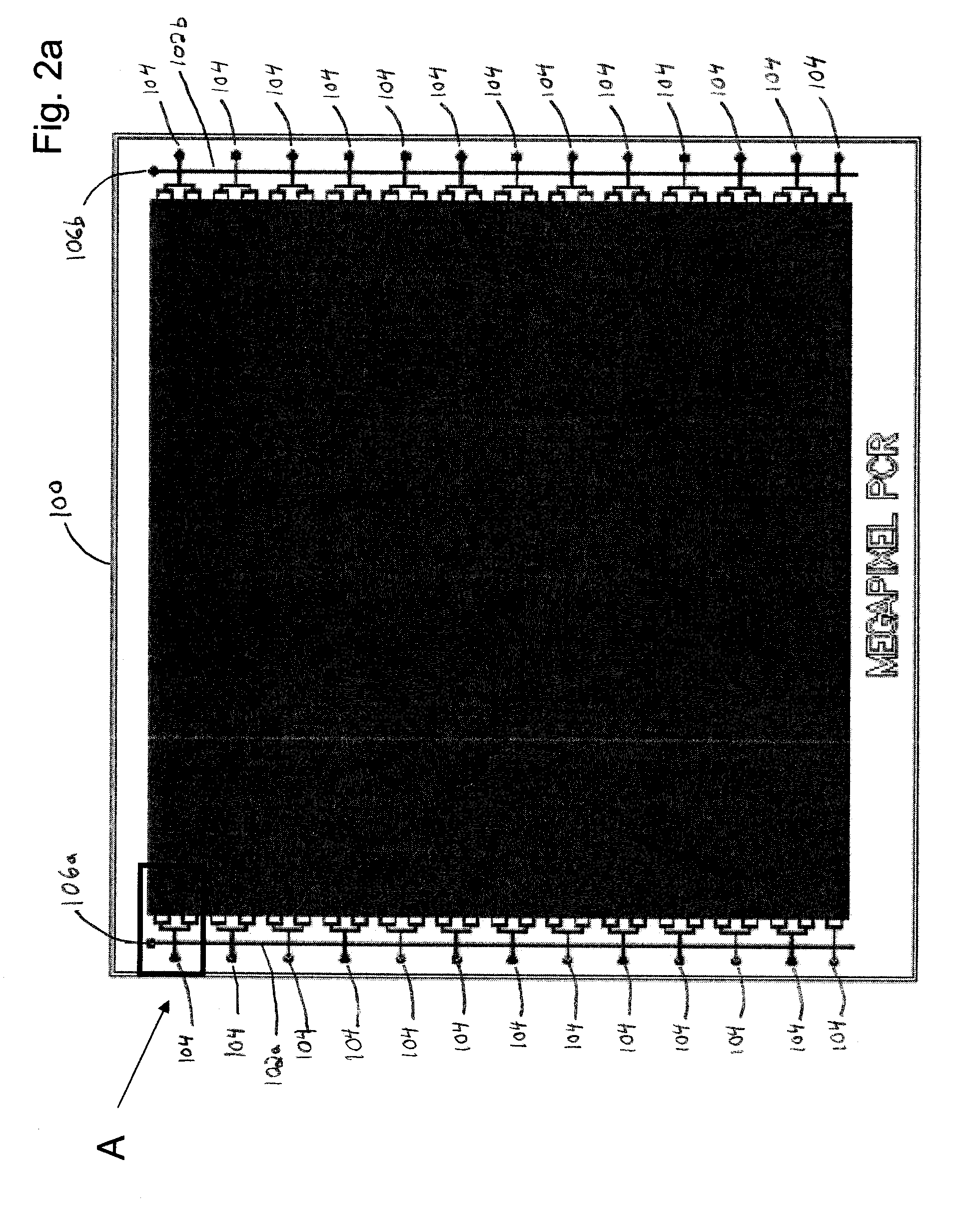Microfluidic device and method of using same
a microfluidic and microfluidic technology, applied in the field of microfluidic devices, can solve the problems of difficult to reliably detect rare sequences, limit the sensitivity of an assay in detecting rare molecular species, and high dynamic range of real-time monitoring of an exponential reaction, so as to reduce the volume of each assay
- Summary
- Abstract
- Description
- Claims
- Application Information
AI Technical Summary
Benefits of technology
Problems solved by technology
Method used
Image
Examples
example 1
Amplification of Target Nucleic Acid in a Large Scale Microfluidic Emulsion Array
[0152]A device incorporating selected coverage by a vapour barrier was used to demonstrate the effects of the evaporation during a PCR experiment. A microfluidic device having the chamber geometry illustrated in FIG. 2d with a chamber density of 1 chamber / 1600 um2 was designed with 5 separate chamber arrays in order to test different samples on the same chip. The PCR solution was introduced into the device and compartmentalized as outlined in FIG. 3. A standard TaqMan assay for GAPDH along with TaqMan mastermix (Applied Biosystems) was used to monitor the progress of the reaction with a concentration of template DNA of about 10 copies per reaction chamber. The reaction was allowed to progress over 40 cycles and the end point picture is shown in FIG. 5.
[0153]The photomicrograph of FIG. 5 shows the results of one experiment. Reaction chambers with positive controls covered by the vapor barrier (positive c...
example 2
Single-Copy Amplification of Target DNA
[0155]By diluting the initial DNA (target nucleic acid) such that each reaction chamber contains only one molecule of DNA or none, it was possible to quantitatively identify the initial amount of DNA present in the sample. Only a reaction chamber with a copy of the target nucleic acid will provide a fluorescent signal for detection, as each chamber that has an optical signal indicates the presence of a target nucleic acid prior to PCR amplification.
[0156]As described, the microfluidic chip was loaded by connecting the fluid lines to a pressurized reservoir of PCR solution containing diluted DNA. After all the chambers were filled, Fluorinert™ oil was pressurized in the main flow lines thereby displacing the fluid everywhere except in the chambers, and the chip ready to be thermocycled. As the PCR reaction proceeds, images of the chip were taken at each cycle. It is therefore possible to see the DNA product (by means of the fluorescent signal) i...
example 3
Discrimination of Small Allelic Imbalances: Non-Invasive Detection of Fetal Trisomy 21
[0158]Minor imbalances in chromosome number were detected using digital PCR techniques employing the microfluidic arrays described herein. In order to determine a 1.5% increase in C21 in a sample, approximately 900,000 PCR reactions were required for 5 sigma certainty:
nC21-nC15=mɛ=kσ=knC21ɛ=1.5%nC21=NChambp(1+ɛ)nC21=m(2+ɛ)k=ɛNChambp(1+ɛ)2+ɛ=5⇒N=895,570chambers
[0159]M is the number of genomic equivalents (1 genome set=two of each chromosome). The sampling noise sigma is the square root of the number of chromosome 21. As discussed, if conventional PCR techniques are used, this number of reactions is prohibitively large and effectively impossible. Use of a microfluidics array comprising 106 reaction chambers condenses this number of reactions into a scale that is possible and effective.
[0160]Copy number of chromosomes 21 (C21) and 9 (C9) were determined using digital detection of the AIRE gene and ABL...
PUM
| Property | Measurement | Unit |
|---|---|---|
| Thickness | aaaaa | aaaaa |
| Thickness | aaaaa | aaaaa |
| Length | aaaaa | aaaaa |
Abstract
Description
Claims
Application Information
 Login to View More
Login to View More - R&D
- Intellectual Property
- Life Sciences
- Materials
- Tech Scout
- Unparalleled Data Quality
- Higher Quality Content
- 60% Fewer Hallucinations
Browse by: Latest US Patents, China's latest patents, Technical Efficacy Thesaurus, Application Domain, Technology Topic, Popular Technical Reports.
© 2025 PatSnap. All rights reserved.Legal|Privacy policy|Modern Slavery Act Transparency Statement|Sitemap|About US| Contact US: help@patsnap.com



